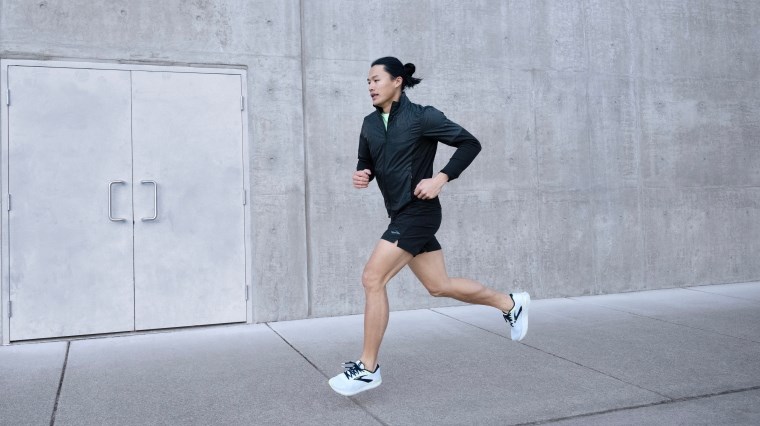Unravelling The Mystery: What Is A Stitch When Running?

Are you ready to conquer the road in your running shoes but plagued by mysterious side stitches? In this article tailored for runners just like you, we’ve unlocked the secrets to running success. Now is the perfect time to dive into the world of running for all runners, novices and veterans alike.
Discover how to breathe for strength, fine-tune your nutrition and hydration, master your pacing, and more with this approachable guide that offers industry-specific running wisdom. Say goodbye to those pesky stitches and hello to a smoother, more enjoyable run.
Understanding The Stitch
What Is A Stitch When Running?
A stitch in running, scientifically known as exercise-related transient abdominal pain (ETAP), is a perplexing discomfort localised on one side of the abdomen. This discomfort can manifest as a sharp, stabbing sensation, cramping, aching and sometimes even a peculiar pain in the tip of the shoulder. Typically, it resides beneath the ribcage.
The experience of a side stitch can vary from one runner to another, but its arrival is often sudden and unwelcome. Some individuals can push through the discomfort and continue running in their women's running shoes or men's running shoes, while most find it necessary to either slow down or halt their activity for relief.
Fortunately, the pain typically subsides within a few minutes of ceasing exercise, though lingering soreness may persist for a few days if the initial episode is particularly severe.
Why Does It Happen?
The precise cause of a stitch remains somewhat elusive, but several theories shed light on this mysterious discomfort:
- Organ Tug of War. One theory suggests that it's the weight of organs such as the stomach, spleen and liver tugging on ligaments connected to the diaphragm.
- Muscle Spasm. Another possibility is a muscle spasm in the diaphragm or surrounding muscles.
- Torso Movement. Activities involving significant torso movement, common in running, can trigger a stitch.
- Warm-up Matters. Skipping a proper warm-up can increase the likelihood of encountering a side stitch.
In the quest to prevent these abdominal discomforts, it’s crucial to prioritise a thorough warm-up before putting on your running shoes or running shorts. Avoid consuming a large meal or excessive fluids immediately before working out.
However, if a stitch does strike, there are several strategies to alleviate the pain, including slowing down, taking deep breaths, and gently massaging the affected area. Compression tights can keep your core temperature regulated and help you avoid muscle-related injuries as well.
It’s important to note that if the pain feels different from a typical side stitch, it could signal a more serious underlying issue, warranting medical attention.
Factors Contributing to Stitches
The Role Of Breathing Techniques
Pounding the pavement demands oxygen. Inadequate oxygen to the diaphragm can trigger side stitches. We recommend a conscious breathing rhythm, like inhaling for two steps and exhaling for one, to enhance breath depth.
Former Olympian Jeff Galloway suggests that side stitches often result from poor breathing techniques. It’s about filling those lower lungs and avoiding shallow breaths.
To evade the dreaded stitch, remember to inhale and exhale fully. Count your breaths or adopt rhythmic patterns to stay focused and prevent injuries. Techniques like pursed-lip breathing and engaging abdominal muscles can relieve discomfort.
Hydration & Nutrition Factors
Be mindful of your pre-run meal. Sugary foods or drinks before a run elevate the side stitch risk. Opt for balanced diets for sustained energy without overloading your digestive system. Avoid heavy meals and drink regularly rather than gulping a large amount of fluid at once.
Dehydration can lead to muscle cramps and side stitches. Keep fluids flowing before, during, and after your run. Proper hydration sets the stage for a successful run.
Impact Of Pacing & Warm-Up
Running too fast can provoke side stitches. Identify your ideal pace, reducing injury risk and enhancing your running experience. If a side stitch strikes, slow down or take a brief walking break. Check your running form if side stitches persist.
💡KEY TAKEAWAY: Just as a car needs fuel, your body needs hydration, nutrition, and proper prep for seamless running, preventing side stitches.
Strategies To Prevent & Manage Stitches

Warm-up Right
Think of your warm-up as the opening act before the main event. Dynamic movements that get your blood pumping and your muscles engaged are key. Reach, rotate your trunk, and stimulate blood flow to the tissues surrounding the diaphragm. It’s like sending a friendly invitation to a smooth run ahead.
In-The-Moment Remedies
Don’t be too proud to hit the brakes. Slowing down or taking a brisk walk can help ease the discomfort until it subsides. Your pace can pick up once the stitch releases its grip. Conscious, deep breathing can be a reliable ally in your battle against side stitches. It might feel like a small effort, but it can make a big difference.
Sometimes, direct pressure can help. While inhaling, apply gentle pressure to the painful area. With each exhale, press a bit deeper into the discomfort. This technique can alleviate the pain, letting you get back to your stride.
Post-Run Recovery
A proper cool-down is like a graceful exit after a fantastic performance. It can help prevent side stitches, so don’t skip it. After your run, ensure you rehydrate adequately. Drinking fluids post-exercise is essential to maintaining your body’s balance and preventing those unwanted cramps.
💡KEY TAKEAWAY: To keep stitches at bay, warm-up properly, don’t be afraid to hit the brakes, and give yourself a proper post-run cooldown.
Advice From Experienced Runners
Insights From Seasoned Marathoners
Activities that engage your muscles and prepare the diaphragm’s surrounding tissues are key to running comfortably. Also, trainers understand that core strength is your armour. It not only alleviates pain but also prevents future stitches.
Real-Life Experiences & Solutions
Full-body stretching is more than just a ritual; it’s a lifeline. It can loosen up tight muscles, which could result in those dreaded stitches. It also helps you relax before a big run. Real runners take special time to stretch and find solace in the relief it brings.
💡KEY TAKEAWAY: Seasoned runners advise that you prepare your diaphragm for a run. And don’t skip that full-body stretch!
Incorporating Stitch Management Into Your Running Routine
Building Resilience Over Time
Rome wasn’t built in a day, and neither is your running endurance. Increase your pace and distance gradually over time. This approach allows your body to adapt to the rigours of running, significantly reducing the likelihood of those unwelcome side stitches.
Stick to a regular running routine to let your body acclimatise to the demands of the sport. Your body will thank you for establishing a dependable rhythm.
Adjusting Training Plans
- Embrace cross-training. Incorporating cross-training into your regimen is a smart move. It not only diversifies your exercise routine but also helps build strength and endurance without subjecting your body to excessive stress.
- Prioritise rest and recovery. Don't skimp on rest and recovery. After each run, let your body recuperate. This not only prevents injuries but also plays a pivotal role in sidestepping those troublesome side stitches.
- Seek professional guidance if need be. If persistent side stitches are your nemesis, consider seeking professional help. Coaches and trainers can assess your training plan and tailor it to your specific needs.
Staying Motivated & Informed
Being part of a running group can be a game-changer. It keeps you motivated, accountable and well-informed. Running with others ignites your competitive spirit and offers a wealth of collective knowledge.
Set realistic goals for yourself to maintain motivation. These goals keep you focused, committed, and hungry for progress.
And speaking of progress, celebrate your achievements. Every step forward is a victory. By acknowledging your accomplishments, you feed your motivation and ensure that the joy of running always propels you forward.
💡KEY TAKEAWAY: Build your running pace over time, make necessary changes to your training plan, and join a running community for more insights on avoiding stitches.
At Sportitude, we believe in the synergy of mindset and movement. Welcome to a world where every runner is championed, equipped with top-notch gear, and inspired by a community that thrives on passion and expertise.
